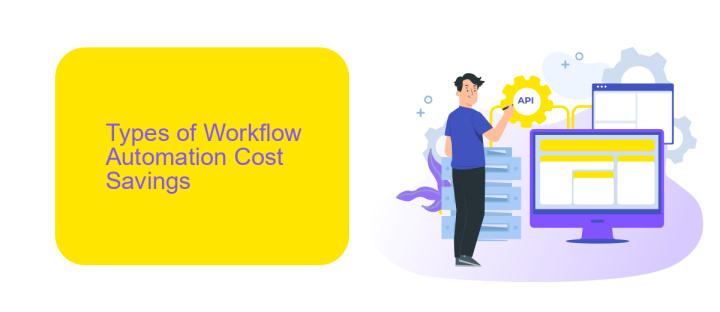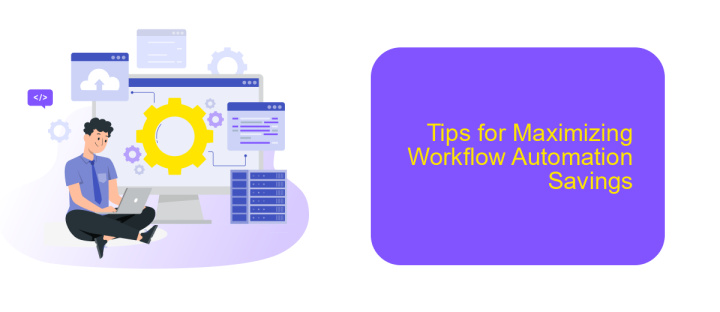Workflow Automation Cost Savings
In today's fast-paced business environment, workflow automation has emerged as a crucial strategy for reducing operational costs and enhancing efficiency. By automating repetitive tasks and streamlining processes, companies can save significant amounts of time and money. This article explores the various cost-saving benefits of workflow automation, providing insights into how businesses can leverage this technology to achieve greater productivity and profitability.
Introduction
In today's rapidly evolving business landscape, the need for efficiency and cost savings is more critical than ever. Workflow automation emerges as a powerful solution, enabling organizations to streamline operations, reduce manual errors, and ultimately save significant costs. By automating repetitive tasks, businesses can allocate resources more effectively and focus on strategic initiatives that drive growth.
- Reduction in manual labor costs
- Decreased error rates and associated costs
- Improved resource allocation
- Enhanced operational efficiency
One of the key elements in achieving successful workflow automation is the integration of various tools and systems. Services like ApiX-Drive facilitate seamless integration, enabling businesses to connect disparate applications without the need for extensive coding. By leveraging such platforms, companies can ensure that their automated workflows are both efficient and scalable, leading to substantial cost savings and improved operational performance.
Types of Workflow Automation Cost Savings

Workflow automation offers significant cost savings by streamlining repetitive tasks and reducing manual labor. One major type of cost saving comes from enhanced efficiency. By automating routine processes, businesses can minimize the time employees spend on mundane tasks, allowing them to focus on more strategic activities. This not only increases productivity but also reduces the likelihood of human error, which can be costly to rectify.
Another type of cost saving is through improved integration of various systems and tools. Services like ApiX-Drive facilitate seamless integration between different applications, eliminating the need for complex and time-consuming manual data transfers. This leads to faster processing times and ensures data consistency across platforms. By leveraging such integration services, companies can significantly cut down on operational costs and enhance overall workflow efficiency.
Measuring the Return on Investment (ROI) of Workflow Automation

Measuring the Return on Investment (ROI) of workflow automation is essential to understand its financial benefits. ROI calculation involves assessing the costs and benefits associated with implementing automation tools. This helps organizations make informed decisions about their investments.
1. Identify Costs: Calculate the total expenditure on automation tools, including software licenses, hardware, and training.
2. Measure Time Savings: Quantify the reduction in manual labor and the time saved by automating repetitive tasks.
3. Evaluate Error Reduction: Analyze the decrease in errors and the associated cost savings.
4. Assess Productivity Gains: Measure the increase in productivity and output quality.
5. Calculate Revenue Impact: Determine the direct and indirect revenue generated due to improved efficiency.
Utilizing services like ApiX-Drive can streamline the integration process, making it easier to connect various applications and automate workflows. This not only reduces implementation costs but also enhances the overall efficiency of the automation system. By thoroughly evaluating these aspects, businesses can accurately measure the ROI and make strategic decisions to maximize their return on investment.
Tips for Maximizing Workflow Automation Savings

To maximize savings from workflow automation, it is crucial to first identify the most time-consuming and repetitive tasks within your organization. By focusing on these areas, you can achieve significant cost reductions and efficiency improvements.
Once you've identified these tasks, choose the right automation tools that best suit your needs. Opt for platforms that offer a wide range of integrations and easy-to-use interfaces to streamline the setup process. One such tool is ApiX-Drive, which allows seamless integration of various applications without the need for extensive coding knowledge.
- Regularly review and update your automated workflows to ensure they remain efficient and relevant.
- Train your staff to effectively use automation tools and encourage them to suggest improvements.
- Monitor performance metrics to identify areas where further optimization is possible.
- Leverage analytics to gain insights into the effectiveness of your automation strategies.
By following these tips, you can not only maximize your workflow automation savings but also create a more productive and agile work environment. Continual assessment and improvement are key to sustaining long-term benefits from your automation efforts.
Case Studies and Examples of Workflow Automation Cost Savings
One notable example of workflow automation cost savings can be seen in a mid-sized marketing agency. By integrating ApiX-Drive, the agency automated the transfer of client data between their CRM and email marketing platforms. This eliminated the need for manual data entry, reducing labor costs by 20% and minimizing errors, ultimately leading to a 15% increase in campaign efficiency.
In another case, a healthcare provider utilized workflow automation to streamline patient appointment scheduling and reminders. By implementing an automated system, they reduced administrative workload by 30%, allowing staff to focus on patient care. Additionally, the automation led to a significant decrease in missed appointments, saving the provider an estimated ,000 annually. These examples highlight the tangible cost savings and efficiency gains achievable through workflow automation.
FAQ
What is workflow automation and how can it save costs for my business?
How much can I expect to save by implementing workflow automation?
Are there any upfront costs associated with implementing workflow automation?
Can I integrate workflow automation with my existing systems?
What kind of tasks can be automated to achieve cost savings?
Apix-Drive will help optimize business processes, save you from a lot of routine tasks and unnecessary costs for automation, attracting additional specialists. Try setting up a free test connection with ApiX-Drive and see for yourself. Now you have to think about where to invest the freed time and money!

